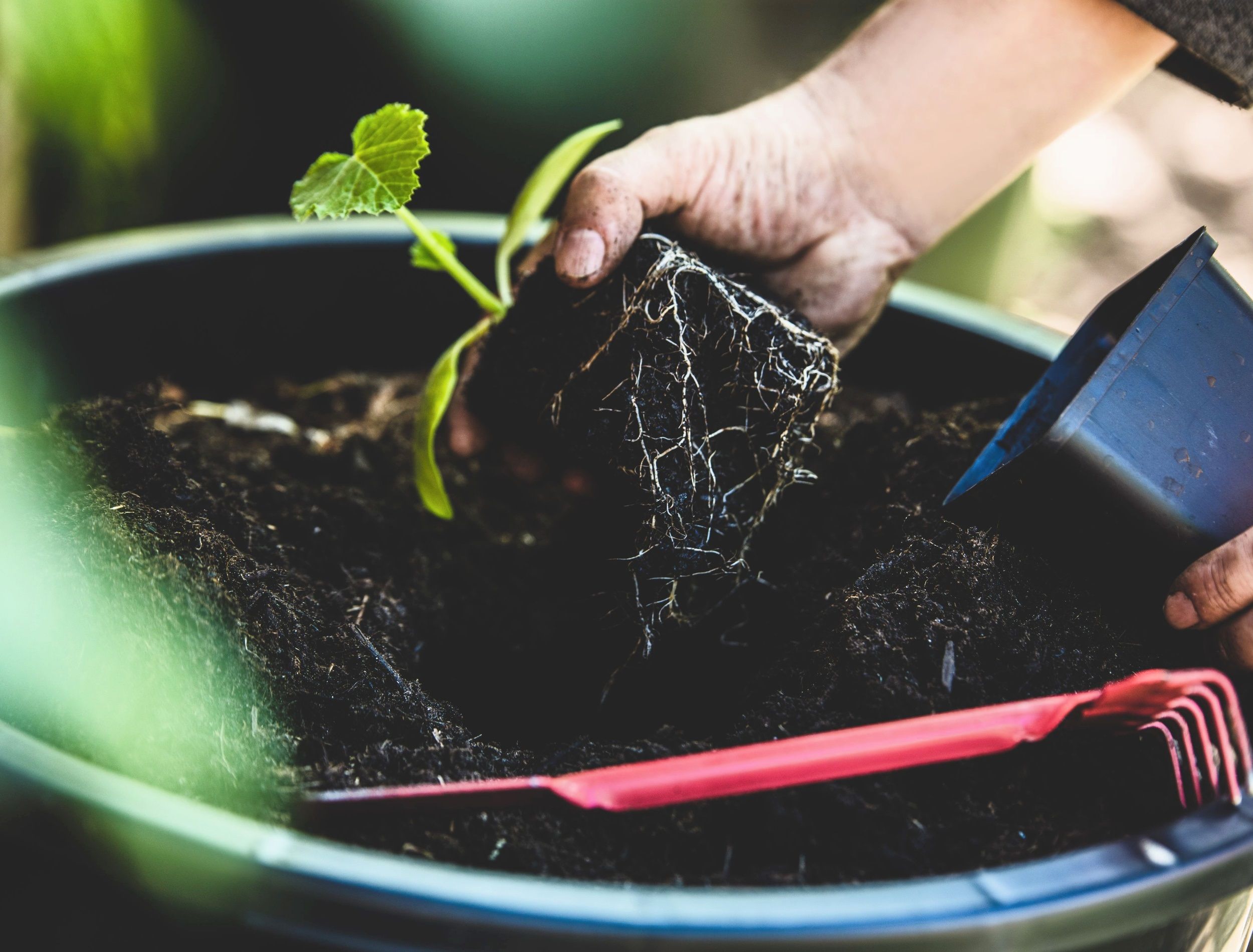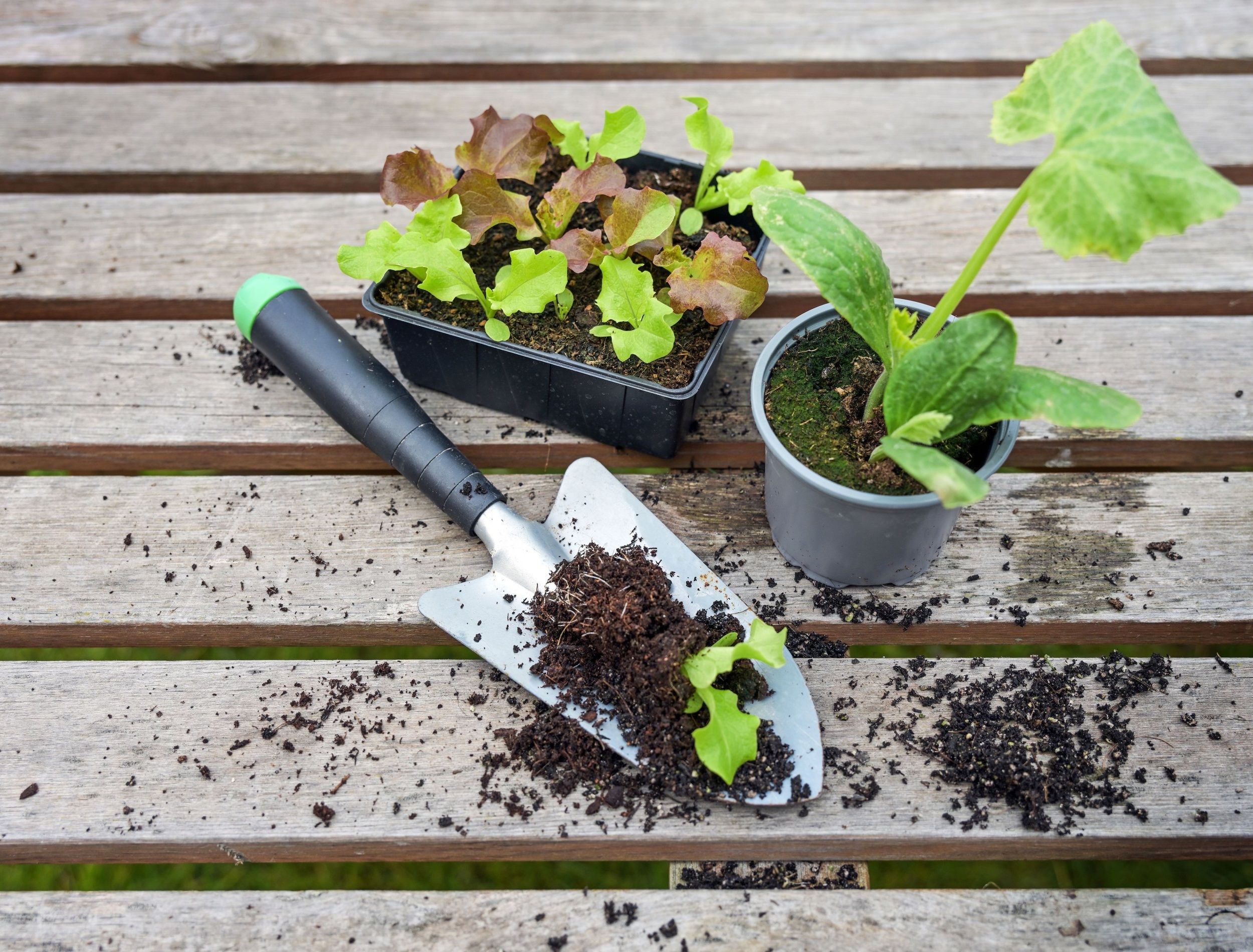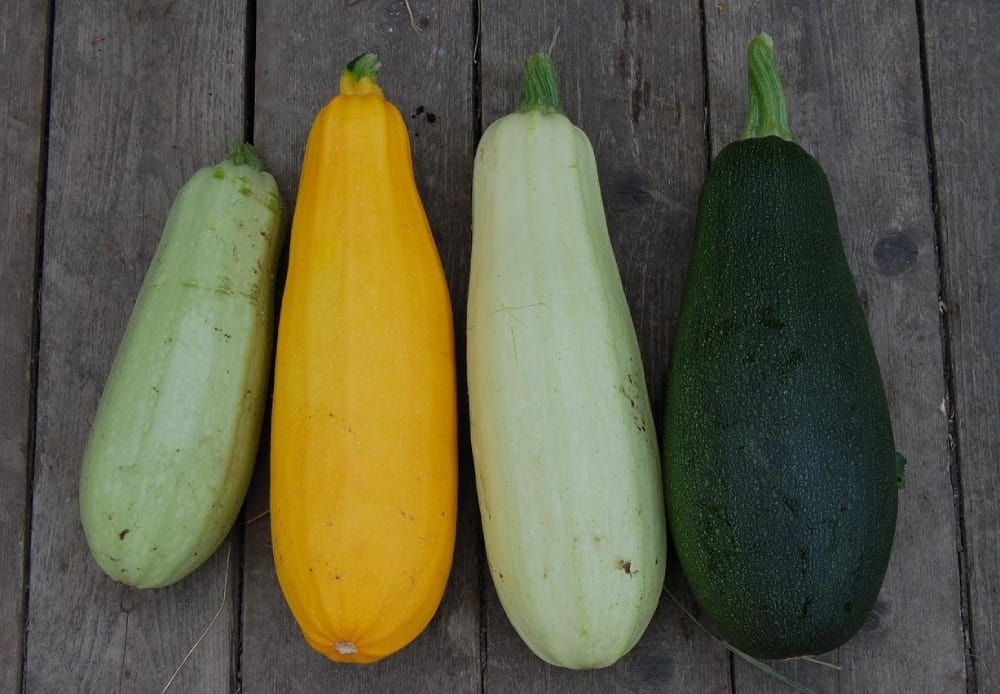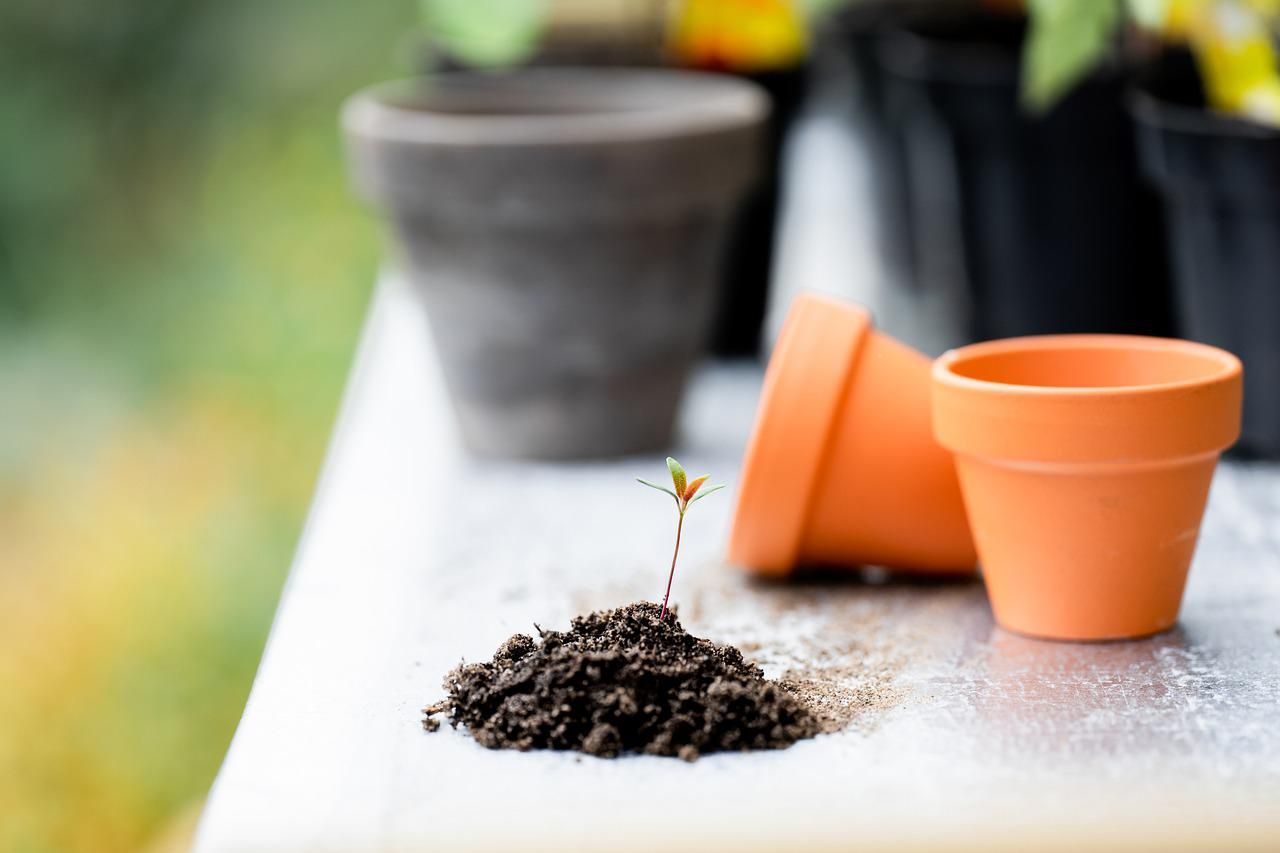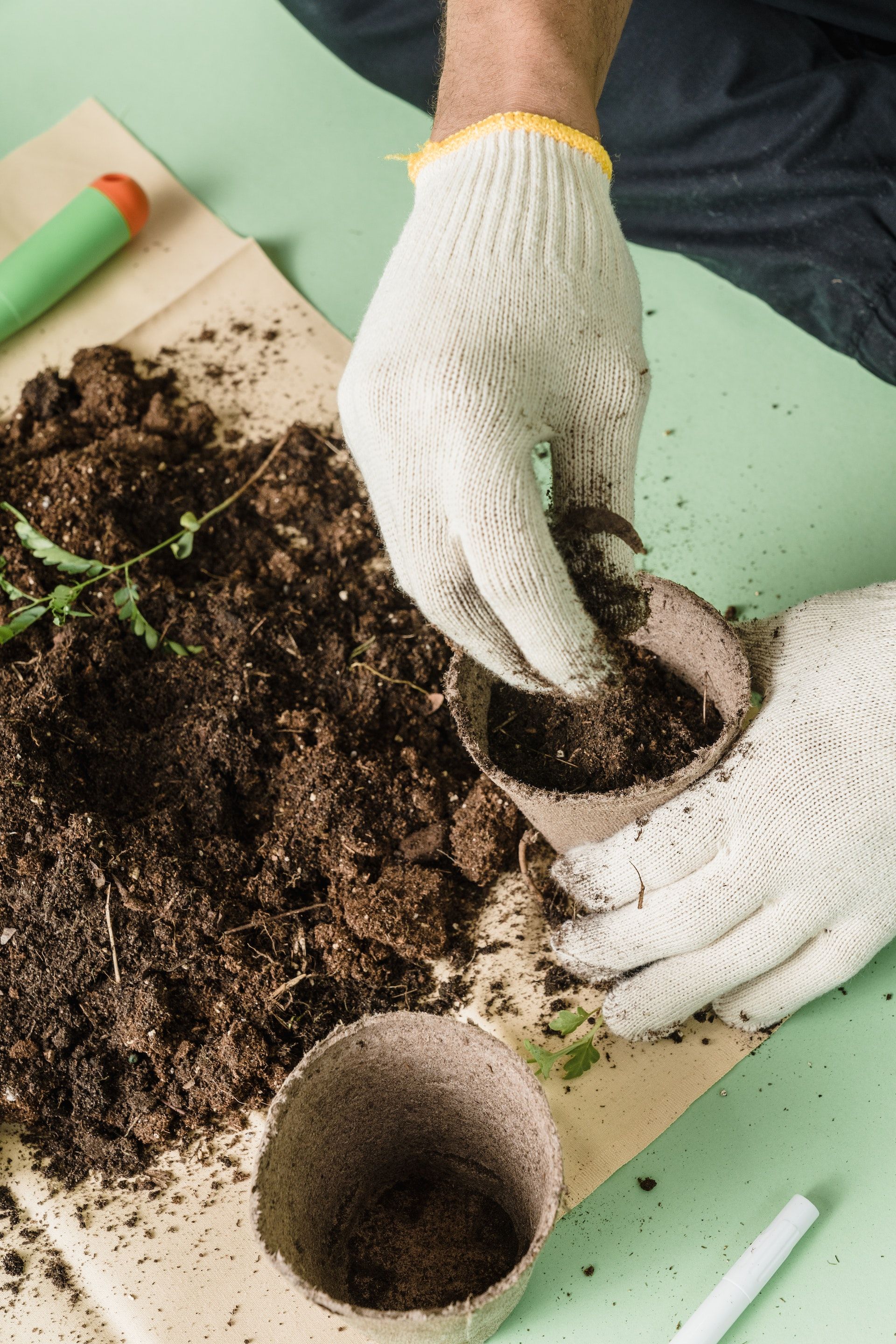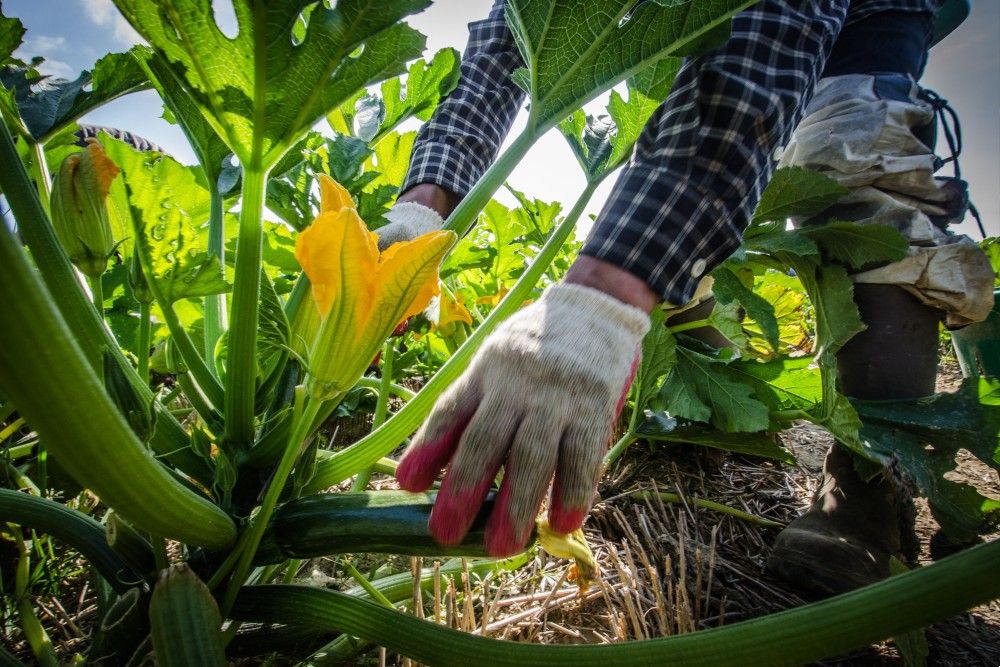Zucchini is a popular vegetable for home gardeners because it's easy to grow. With the proper care, you'll see lengthy vines and plump, mouth-watering fruits. While it's true that zucchini plants are large, you can grow them in containers. This is perfect if you're short on space or want to continue growing your plants in a greenhouse through the winter.
While growing zucchini plants in pots will require a bit more attention, these plants are a rather low-maintenance addition to your container garden. Below, you'll discover the step-by-step guide to growing zucchini in pots, as well as a few tips and tricks along the way.
Tools You'll Need
Image credits: Maren Wiinter via Shutterstock
Ready to plant your zucchinis in containers? First, you’ll need to gather a few tools. Find all the essentials down below.
- Zucchini plant seedlings or seeds
- Large pot with drainage
- Nursery pots
- High-quality, well-draining potting mix
- Compost
- Fertilizer
- Hand trowel
- Gardening gloves
- Trellis
- Watering can or hose
How to Grow Zucchini in Pots
Step 1: Choose Your Variety
Image credits: Alexey_Hulsov via Pixabay
Zucchini are a tender warm-season annual, so they require certain temperatures to germinate and grow. You can either germinate seeds in nursery pots or purchase seedlings from a garden center. Cucurbits only take around three to four weeks to develop into seedlings when grown from seed.
If you're looking to get an early start on the season, start the seedlings indoors at temperatures around 60 degrees Fahrenheit. Otherwise, you can grow your cucurbits in containers in a greenhouse.
Growing zucchini plants in pots means choosing a variety that is suitable for your space and container. Varieties labeled "compact" or "for containers" will work best. A few options include zebra zuke and sweet zuke.
Step 2: Prep Your Pot
Image credits: Ylanite via Pixabay
The size of pot you choose will depend on the variety of zucchini plant you have. With that said, larger is better since these plants generally grow quite big. Remember to opt for a pot with a drainage hole to avoid overwatering the plants. Zucchini are thirsty plants, so use a plastic or glazed ceramic pot that will maintain moisture better than terracotta.
Since zucchini plants have shallow roots, use a pot that is wider than it is deep; It's recommended to use no less than a five gallon container. A rectangular pot around 24 inches wide and at least 12 inches deep will work perfectly.
Zucchini plants thrive in fertile, well-draining soil. You can also mix in compost for extra nutrients.
Pro Tip: If you are reusing a pot, properly clean it so you don't transfer any diseases to your new plant. Simply rinse off the leftover soil and soak it in 10 percent bleach for 30 minutes. Then, rinse again to remove any bleach residue.
Step 3: Plant and Transplant
Lara Jameson via Pixabay
Whether you've germinated your own zucchini seeds or purchased seedlings from the garden center, it's now time to transplant into the container you've prepped. Start by filling the pot one-third of the way with a high-quality, well-draining potting mix. Then, transplant your seedlings, handling the roots carefully, into the pot.
Transplanting is optional if you're growing from seed, it's generally a way to get a head start on the growing season. You can always place the seeds directly into the pot, planting two seeds in each container so they're properly spaced out. If you plant too many your container will get over crowded and your crops will fight for nutrients. If your containers are outdoors, only plant after the last predicted frost when temperatures are above 60 degrees Fahrenheit.
Pro Tip: Add mulch on top of the soil to maintain moisture levels and insulate the roots of the plant.
Step 4: Zucchini Plant Care
Image credits: USDAgov via Creative Commons
While zucchini plants are generally low-maintenance, they do require consistent care to produce fruit.
After planting, water thoroughly and continue to water regularly. The plants are heavy water feeders, so pay close attention on hotter days and when they are producing fruit. Also, remember that container plants dry out more quickly. Water at the roots and never get the leaves wet to avoid common diseases such as powdery mildew.
Place the container in a sunny spot, ensuring the plants get at least six hours of sun each day. You can also use a trellis to help plants climb and grow straighter fruit. Keep an eye out for pests such as cucumber beetles and install sticky traps to prevent them. Also, prune off dead stems and excess foliage to encourage new growth.
Zucchini are generally ready for harvest within 60 days of transplanting. Once the plant flowers, you can begin harvesting. Cut the fruit and flowers (they're edible too) off the vine with a sharp knife. You can also harvest smaller fruits to slow production. Store unwashed in an open paper bag in the crisper drawer for up to 10 days. You can also freeze and store for up to three months.
Get Planting!
Having zucchini plants growing in a container garden next to your kitchen door or in a greenhouse just a few steps away is great for convenience and keeping things low-maintenance. Plus, zucchini makes a delicious addition to almost every meal! Planted in a large container with the proper care, your plants will produce scrumptious fruits.
Do you have any tips for growing zucchinis in containers? Share in the comments below!

